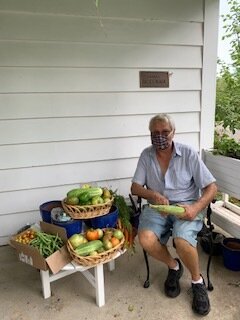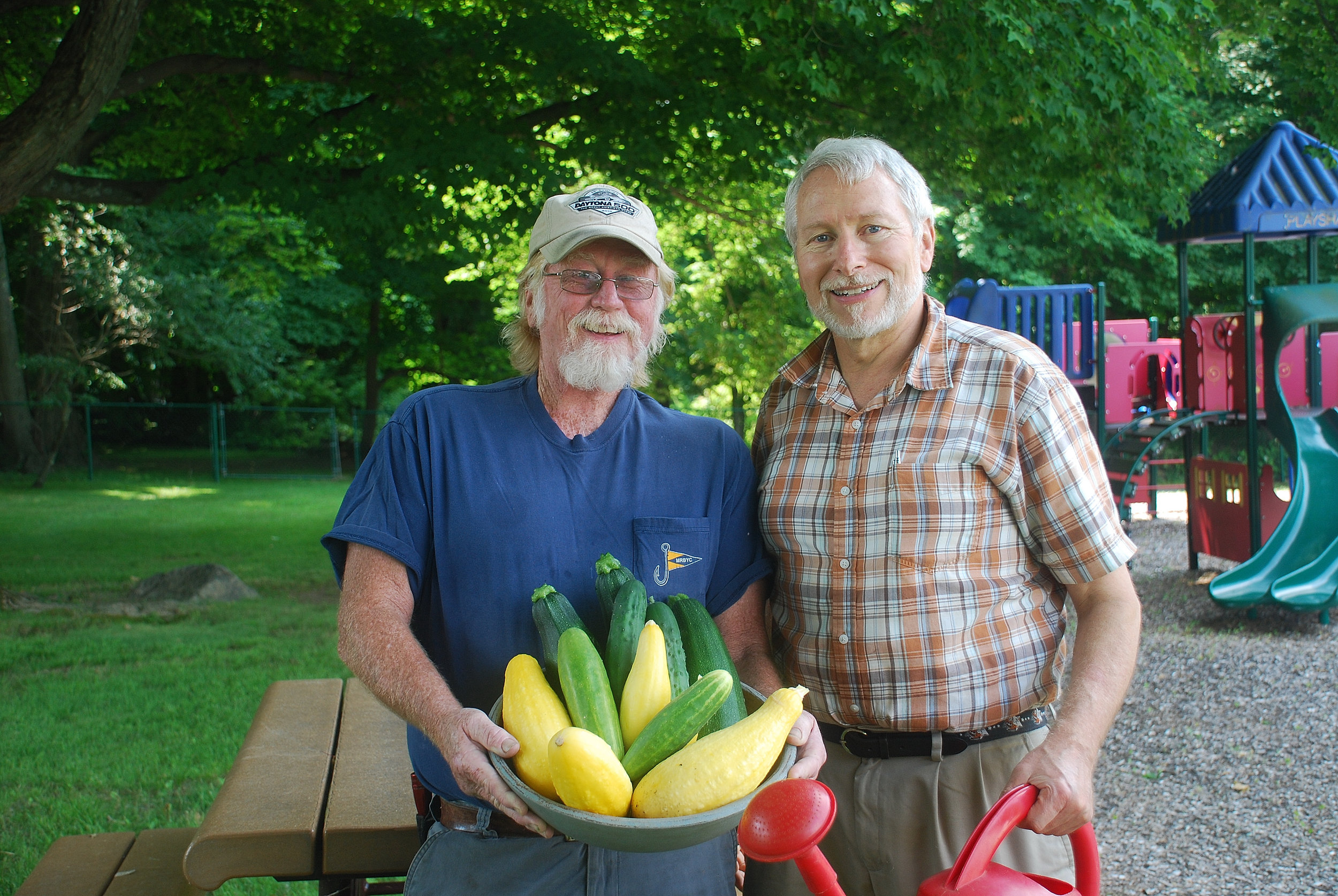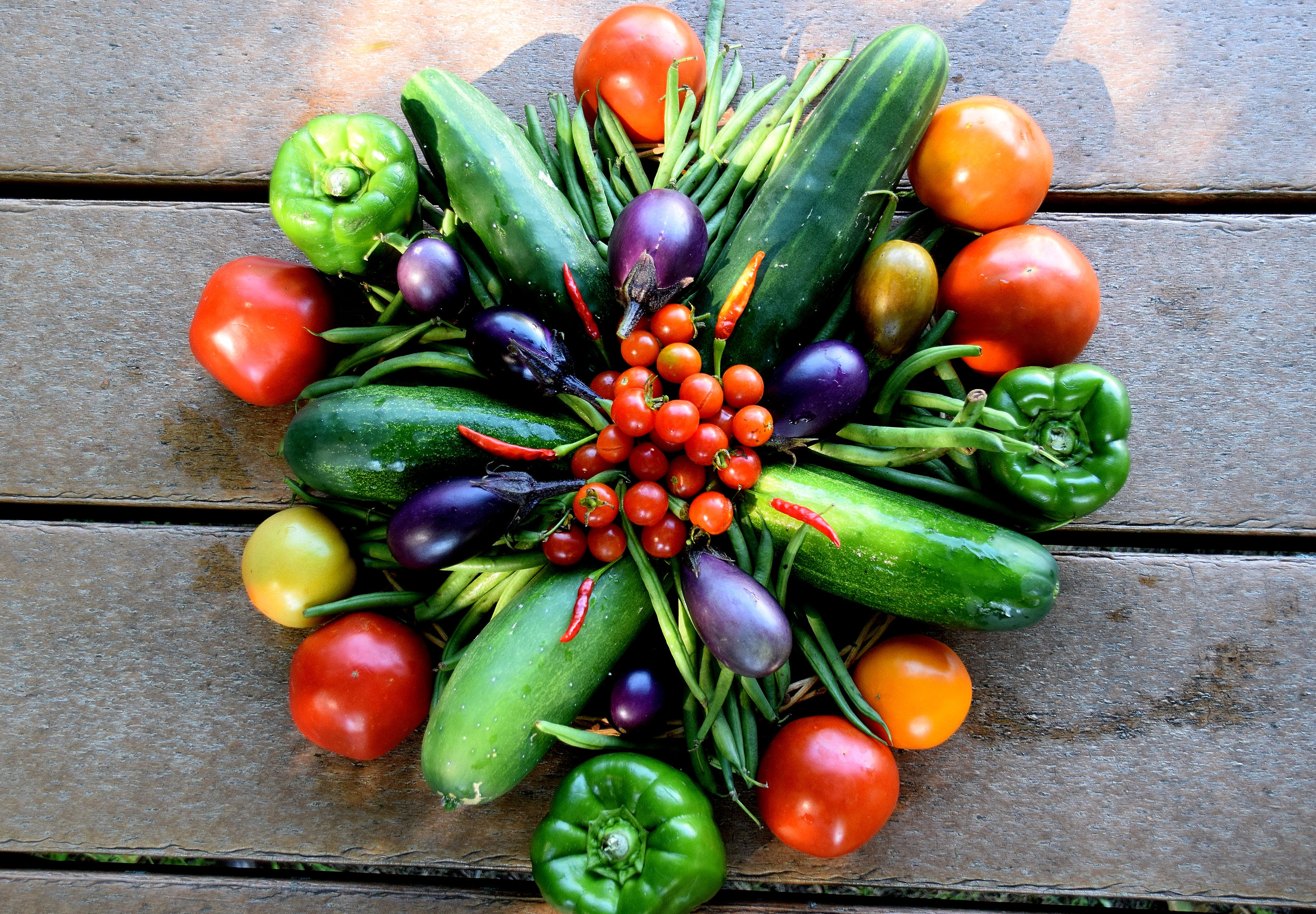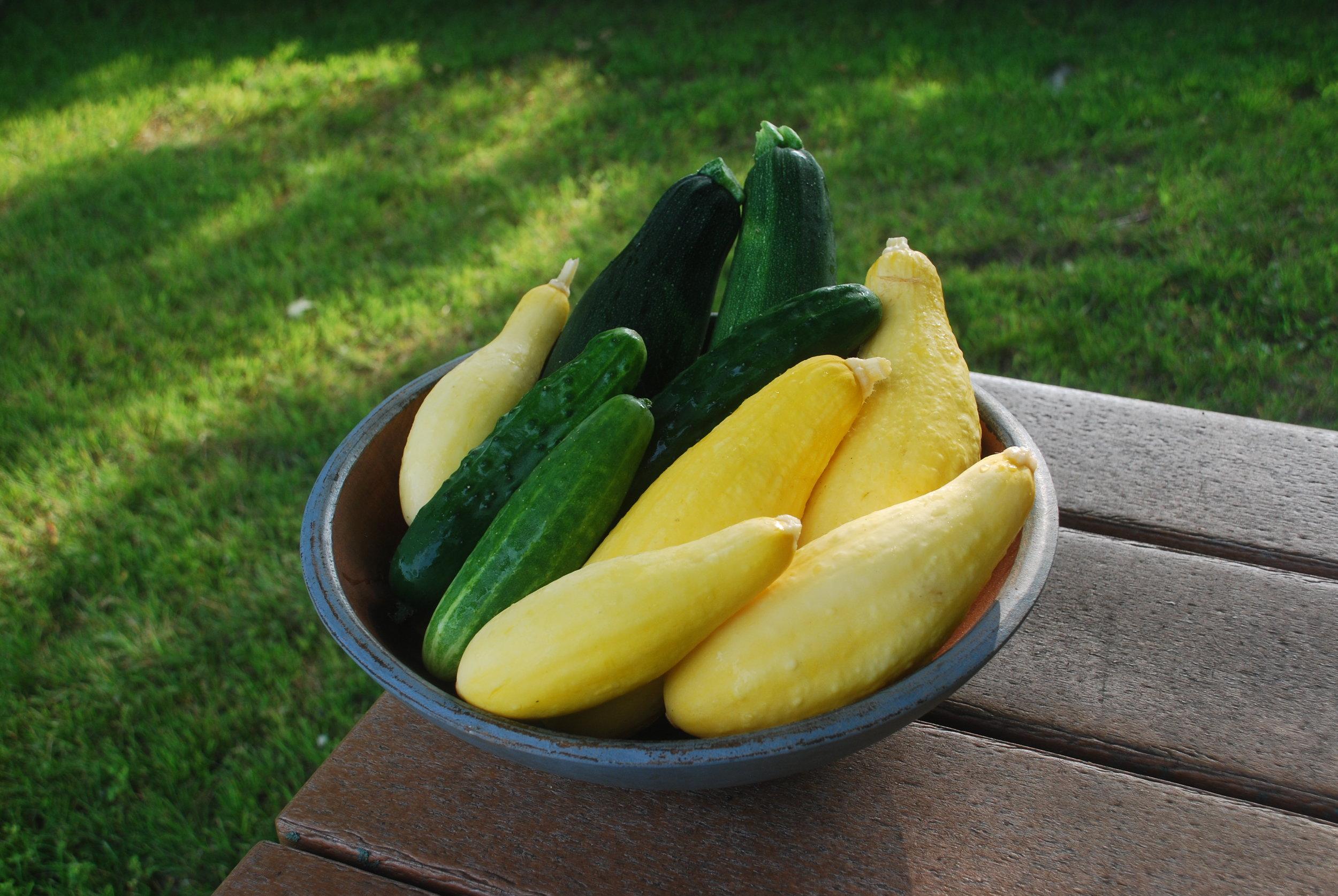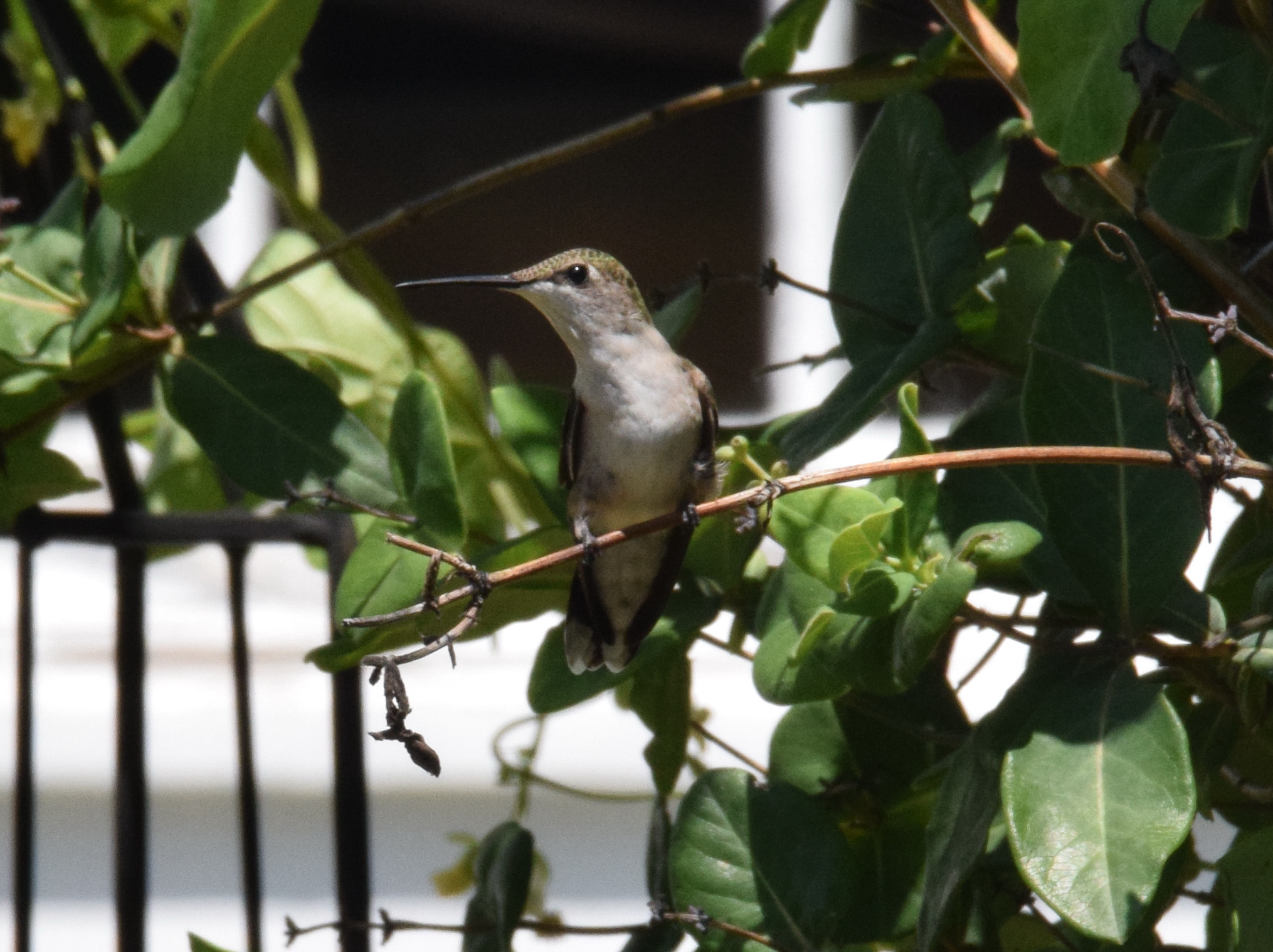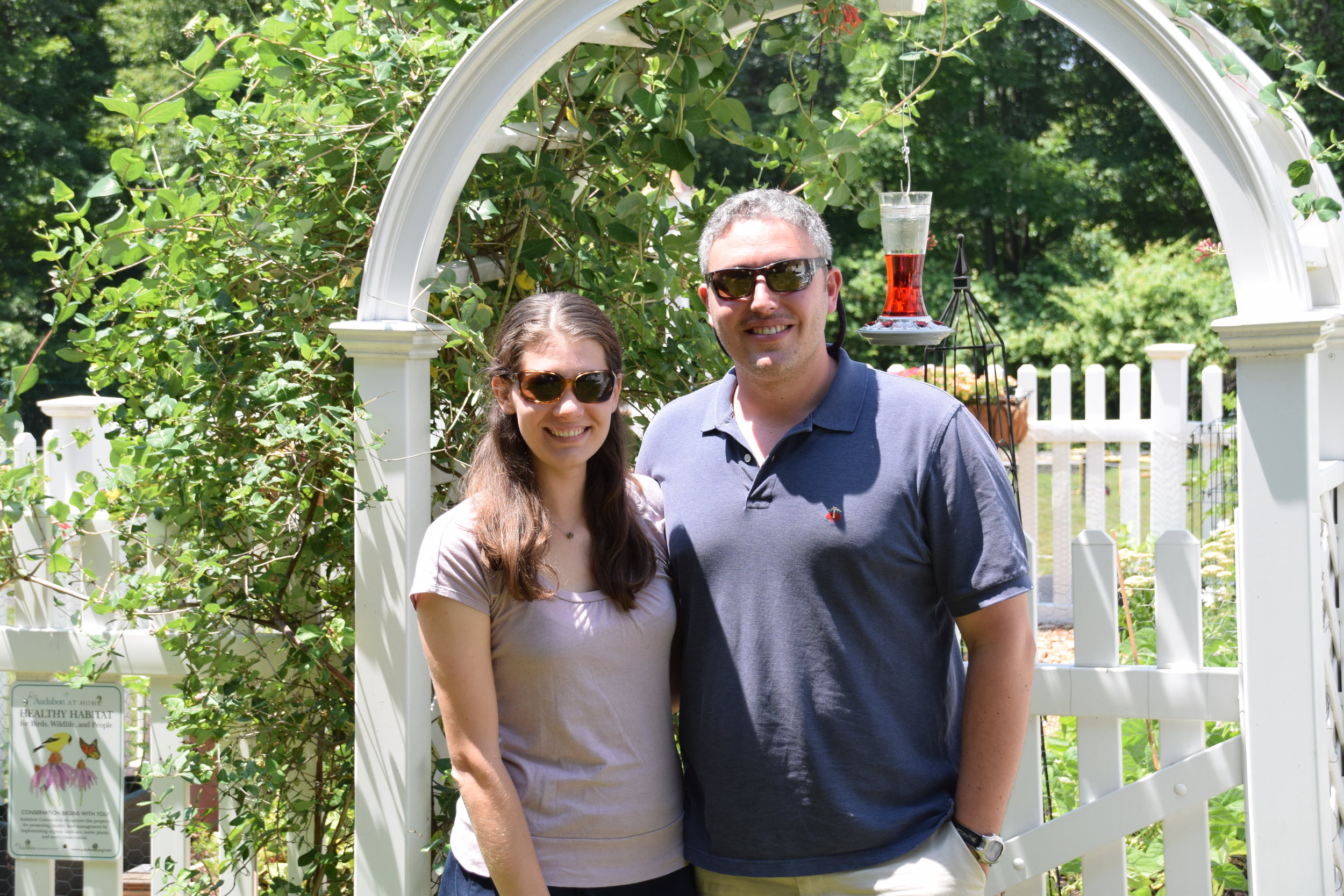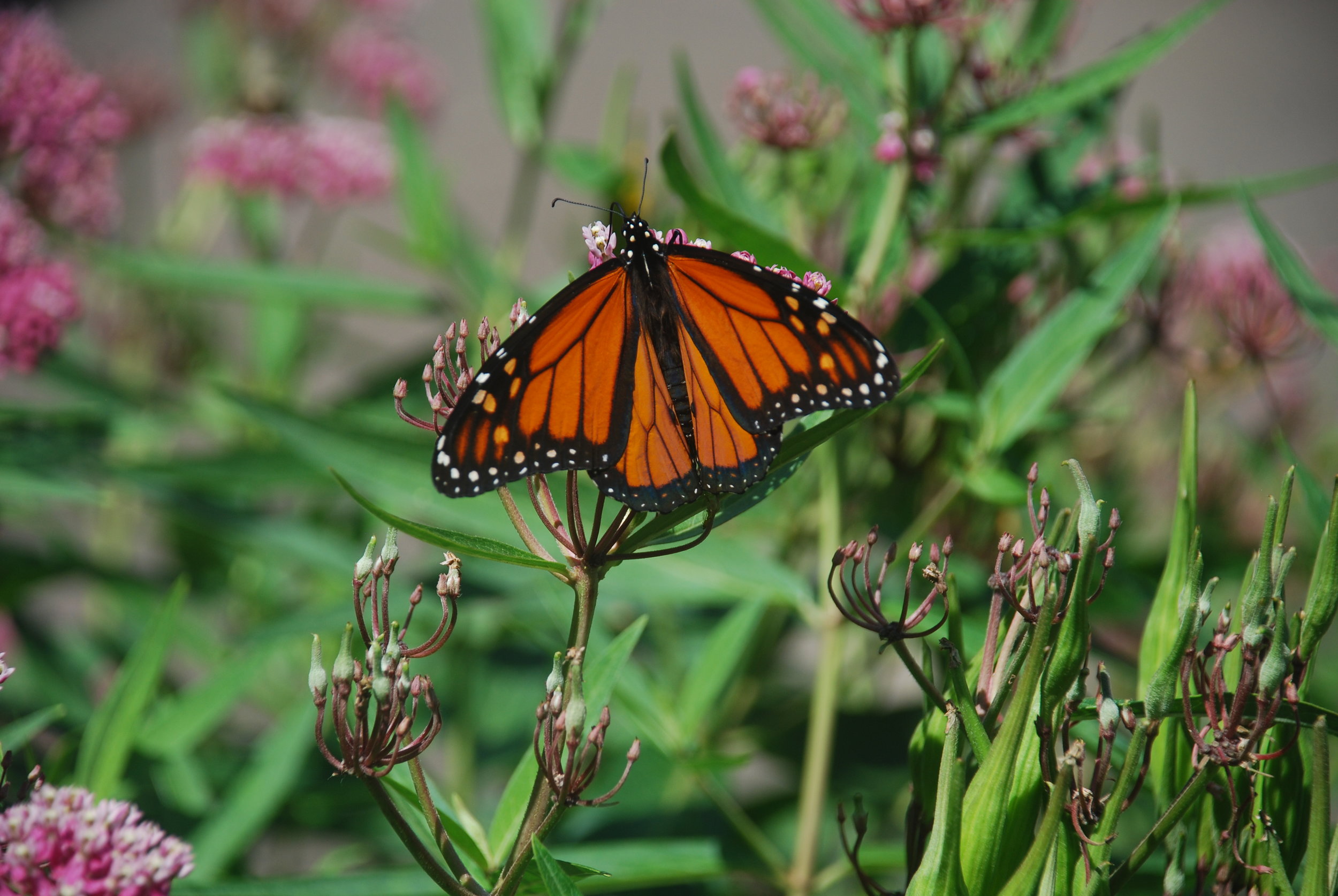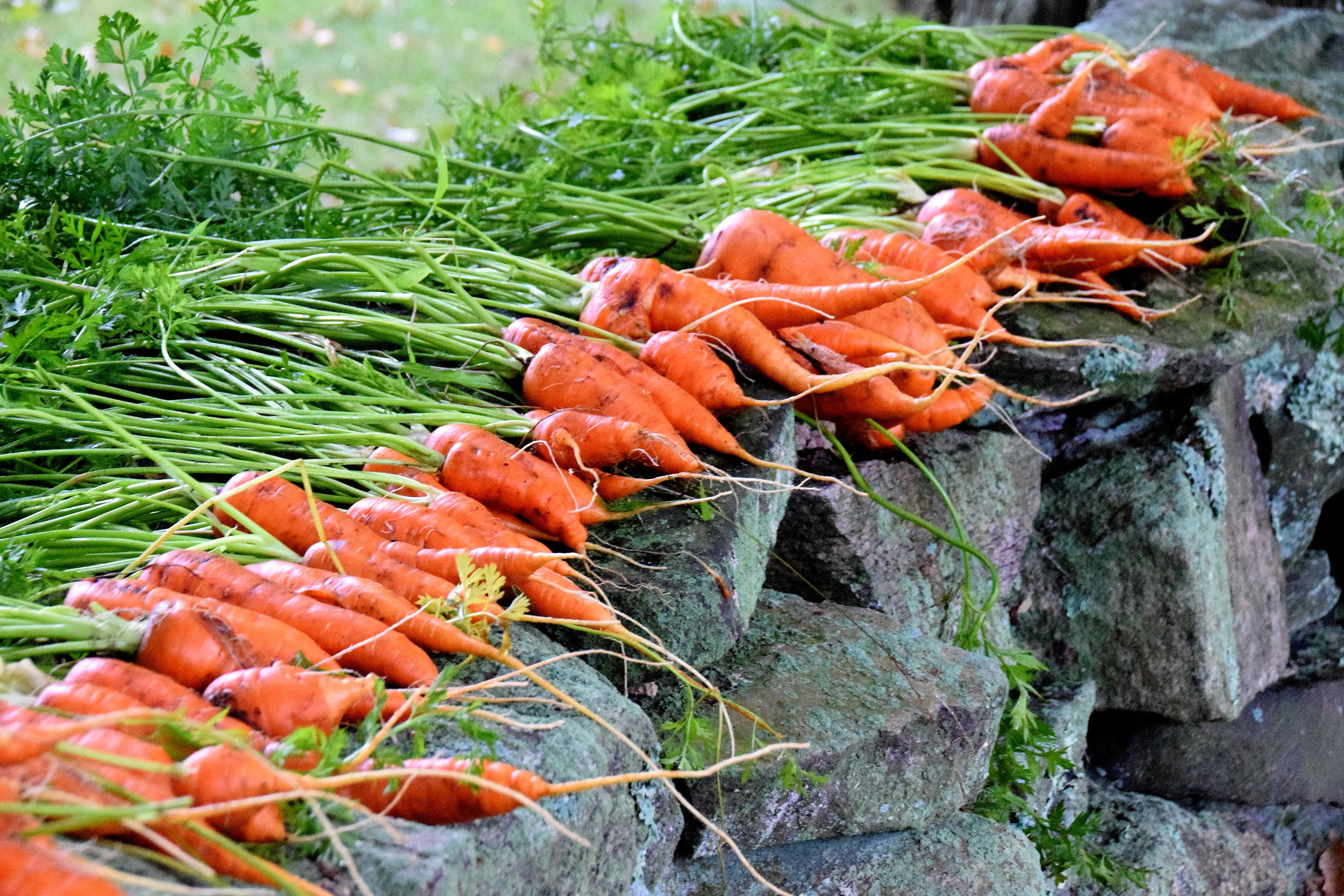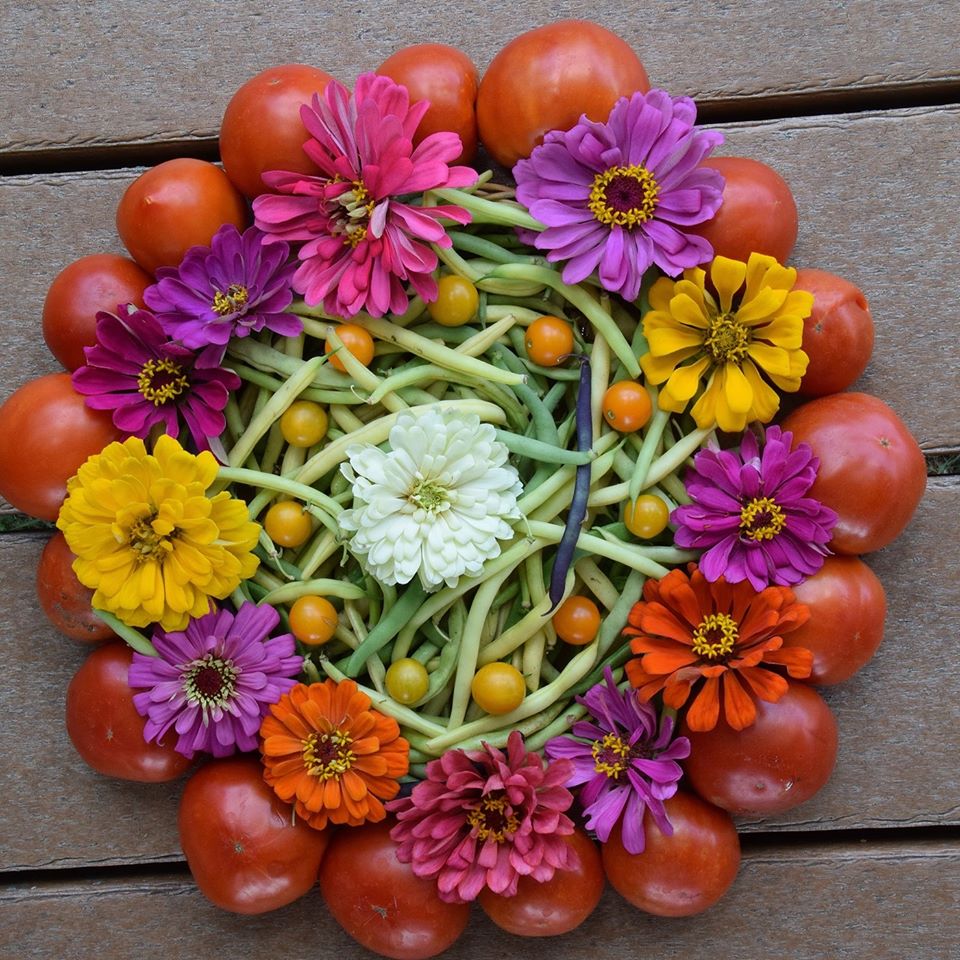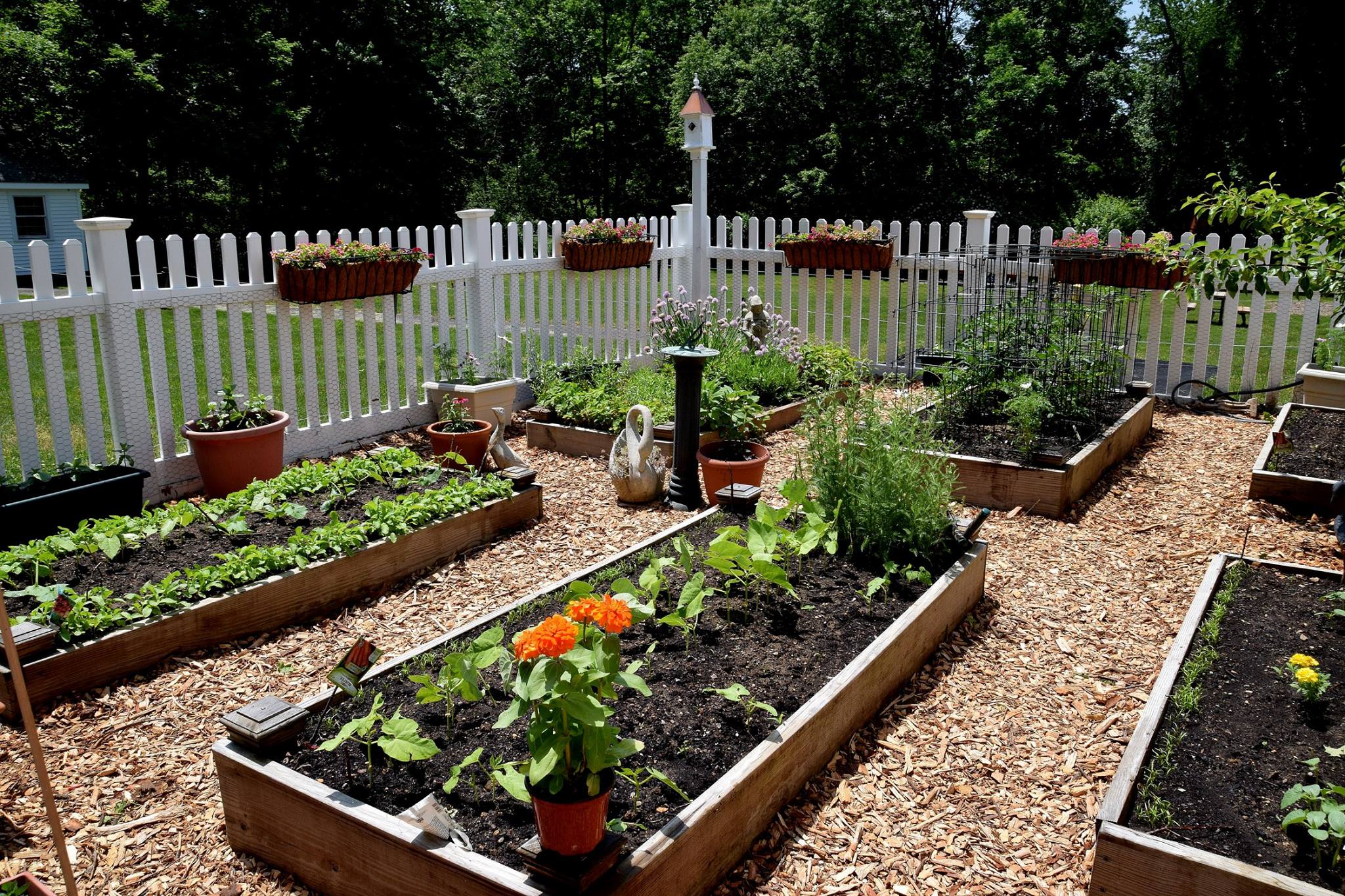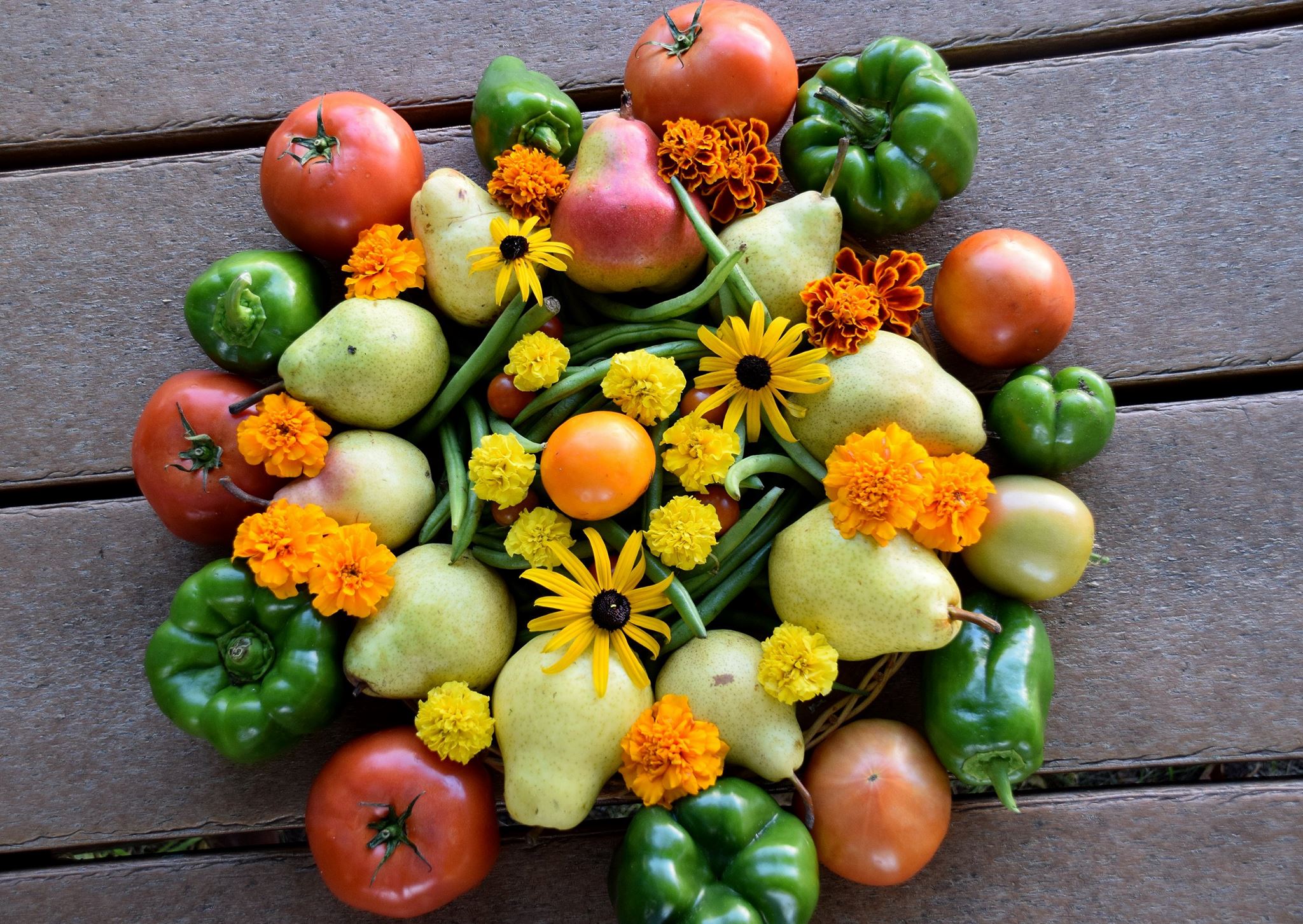NGCC Teaching Garden
Jeff Junker gives so much of himself and the bounty from the garden he tends at North Greenwich Church. The seeds from the garden are handed down from his mother’s garden. The harvest is donated to Neighbor to Neighbor.
This summer’s garden crop was a bountiful as ever. Having Neighbor to Neighbor in our parrish hall made deliveries super easy too!
Spring Winter Carrot Harvest
Abundant crop of winter carrots harvested on April 15. This marks the first donation from the garden for 2020, all of which were given in our support to Neighbor to Neighbor.
Neighbor to Neighbor is providing critical food support to the community and we are blessed to be able to provide fresh produce.
Supporting Local Food Pantries
We are taken back to learn that nearly 119,000 children in Connecticut live in poverty and that 56,000 people are considered to be “working poor.” Even though a number of them are eligible to participate in food programs, most prefer to go to food pantries.
According to statistics provided by the Food Bank of Lower Fairfield Country, a family of four living in our area (two adults and two children) needs an annual salary of $67,000 to avoid being “food insecure.” Needless to say, the working poor usually earn the state minimum ($9.15 per hour at the time of the study.) This means that both adults would have to work 10 hours a day, 7 hours a week, for an entire year …just to earn $66,612! Today the minimum wage is $9.60 per hour, but that hardly puts a dent in the arithmetic. The dreadful fact remains: families have to make the choice of eating nutritiously, or paying the rent. This is why food pantries have become such a vital presence, even in affluent areas like our own.
In addition to raising funds through special offerings, the fresh fruits and vegetables that we grow in the Teaching Garden are donated to local food pantries. We feel it is part of our congregation’s witness to improve our neighbors’ access to nutritious, affordable food, thereby reducing food insecurity and making our community healthier.
"As long as the earth endures – seedtime and harvest, cold and heat, summer and winter, day and night – will never cease." –Genesis 8:22
Commitment
In the Spring of 2011, the Board of Deacons and the Board of Trustees of the North Greenwich Congregational Church voted unanimously to establish a teaching garden as an integral part of the congregation’s outreach program.
Rationale
It is widely accepted that responsible care of our environment is essential to our immediate and long-term well-being. As “caretakers” of the natural order, we are becoming increasingly aware of the negative impact humankind is having on the world’s natural resources. Environmental pollution (from factory emissions to the chemicals we apply to our lawns) is rapidly changing our world and threatening human and wildlife survival.
As a church, we accept our unique role as a moral conscience within the community. Our own spiritual heritage upholds “stewardship” of the natural order as one of our core principles. We have determined that our congregation must take an active role in encouraging our members and friends to become better “stewards” of our corner of the earth. We intend to lead by example. We are committed to educating ourselves, changing long-standing patterns of behavior, and joining forces with other like-minded religious and civic groups to nurture an environment that will better address our physical, emotional and spiritual needs.
Outdoor Classroom
The creation of a garden classroom will provide a space for members and friends to broaden their horizons and discover the world around us.
For example…after each winter thaw, the congregation has struggled with major flooding in the basement of our education building. No sooner has one remedy been installed, ground water eventually finds its way around our ingenious system of barriers.
These chronic headaches eventually forced us to address the fact that the building is situated in a natural watershed that is vital to the region. Despite our attempts to curtail its progress, this water is determined to reach its appointed destiny – the Long Island Sound – even if the path goes right through our classrooms! We have subsequently designed a drainage system that works “with” and not “against” the natural flow of water into adjacent wetlands. Some of that run off is now being directed to storage units that will eventually irrigate the garden. This is only one of a multitude of discoveries that we anticipate making - as this project continues to move forward.
Audubon “Partnership”
The church is fortunate to be located directly across the street from the Audubon Center. Through the years, the pastor has been involved in Audubon Greenwich’s Teacher-Naturalist program – an education initiative that promotes the benefits of nurturing healthy habitats for ourselves and other wildlife.
We were inspired when Jeff Cordulack, former Events and Communication Manager of Audubon Greenwich, organized an event that focused on the screening of the film, “Nourish: Food + Community.” The documentary explores the story of food – where it comes from, how its path to our tables affects our health and our local/global environment. Various guest panelists were invited to share their own insights about sourcing local foods, enhancing nutrition, and promoting the benefits of home and community gardening. Quoting author Michael Pollan, Jeff reminded us that “food is not just fuel. Food is about family. Food is about community. Food is about identity. And we nourish all these things when we eat well.”
There is a growing movement within our society that is committed to finding ways to live more responsibly within our environment. The evidence that humankind is destroying the earth’s essential resources is just too compelling. Interestingly, this movement appears to cross many of the artificial divides that often separate people from one another. We believe that all humans seek to live in harmony with each other and the world around us. We sincerely yearn to restore relationships that are vital to our own sense of place in the world. The Congregation’s proximity to both Audubon Greenwich and Audubon Connecticut provides a unique opportunity to join hands in addressing our role as “caretakers” of our local habitat.
Audubon-At-Home
One way to strengthen the Congregation’s ties with our Audubon neighbors is through the Audubon-At-Home Program. Conversations with Jeff Cordulack eventually included Taralynn Reynolds, former Audubon-At-Home Coordinator. This program is designed to create healthier habitats across the community for birds, other wildlife - including people! The program is designed to restore the ecological integrity of each community’s respective region. This goal will be accomplished principally through reduced pesticide use, water conservation and quality protection, removal of invasive plants and planting native species that better support wildlife.
An Audubon-At-Home team was contracted to conduct an environmental assessment of the church property. The teaching garden will be one of a number of projects that the Church will undertake in coming years to address the program’s 16 key objectives toward establishing a healthy sanctuary for ourselves and neighboring wildlife. It is our congregation’s desire to become an “official” Audubon-At-Home site and to participate in a community-wide effort that advocates the responsible stewardship of our surroundings.
Catalyst to Wider Outreach
The congregation believes that construction of our outdoor “garden” classroom will initiate a learning process that will begin with simple measures that we (as individuals) can embrace to nurture a healthier, more sustainable way of living. Over time, we expect to share our own experiences with friends and neighbors. Our mission is to improve the physical, emotional and spiritual well being of those whose lives we touch. Our ultimate goal is to entrust the rich, vibrant, and abundant environment that we inherited, to our children and grandchildren for future safe keeping.
Local Outreach
Along the way, we will commit the garden’s produce and flowers to serving the needs of the community. Fresh vegetables will be donated to local food banks and shelters. Bouquets of flowers will brighten our hospital, nursing home and home visits.
Global Outreach
We also see the garden as a place to engage the multitude of challenges that we face in the twenty-first century, including water conservation, healthy soil development, and chemical-free cultivation. Through ancillary programming and studies, we envision a broader discussion about local food production and distribution, carbon foot-printing, climate change and local/global hunger issues. For example, it is becoming increasingly apparent that accessibility of fresh water will eventually overtake fossil fuels as the most pressing political issue of the 21st century. The garden program will helps us prepare our children for their lives in a rapidly changing world.
Future Projects
In time, we envision more ambitious projects like refurbishing the education building for fuel and cost saving maintenance. The Board of Trustees is talking about converting the church facility to solar energy. The beauty of this program is that we are limited only by the width and breadth of our own imagination.
Building Community
Probably the most exciting aspect of this venture is building a broader network of relationships across the community, region, state – and globe!! For example, our organic gardening experience will enable us to better understand issues that farmers (we are currently supporting in rural Haiti) are facing.
We look forward to strengthening our existing ties with my colleagues at Audubon and the vast network of community, state and national experts that are associated with the organization. Other relationships will emerge as well, beginning with Patty Sechi at the Armstrong Court Community Garden in Greenwich.
I can also envision hosting events with other churches and community groups on topics relating to sustainable living and environmental stewardship. The opportunities to develop partners in these efforts are endless.
Stewardship Group
A Stewardship Group is in its formative stages. Once the beds are ready for planting, the Club will oversee the garden care and maintenance. One of our Deacons is a master gardener who will serve in an advisory capacity.
The Stewardship Group will also serve as a programmatic committee – planning an array of programs of public interest, including planting with native species, composting, and organic cultivation.
Youth Participation
Middle school and Senior High youth will be encouraged to participate in the garden project. This program will qualify for community service points needed in local schools. Along with assisting in routine chores and maintenance, we also welcome young people to participate in the various local mission outreach projects that will eventually evolve, including the distribution of home grown produce to area food banks and shelters – and flower bouquets to local hospitals and local nursing homes.

